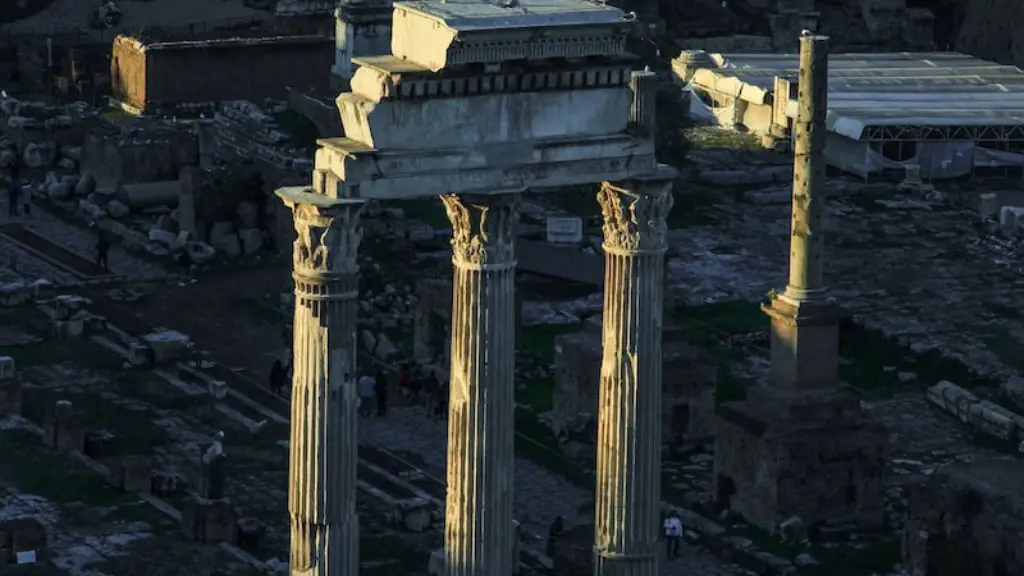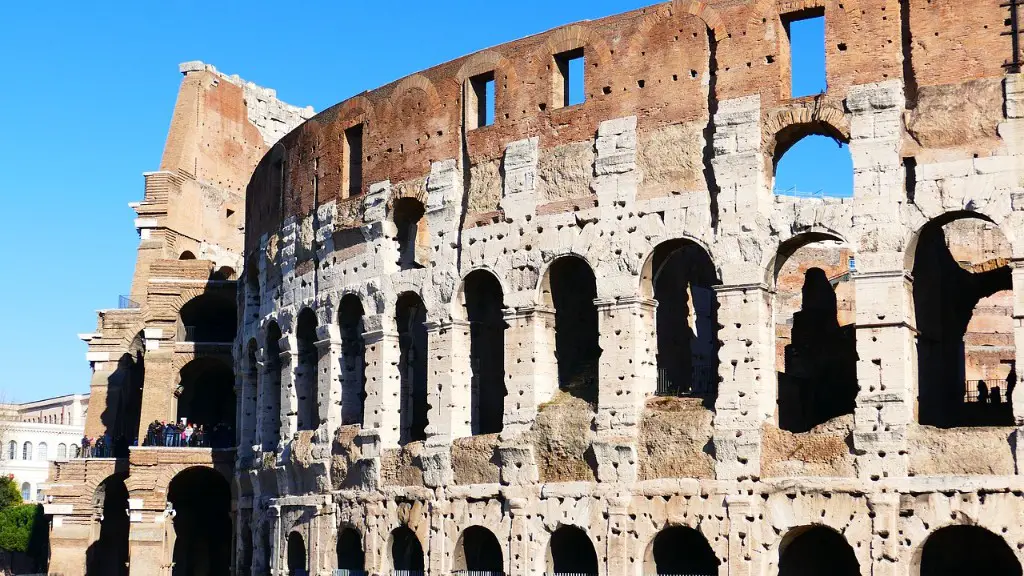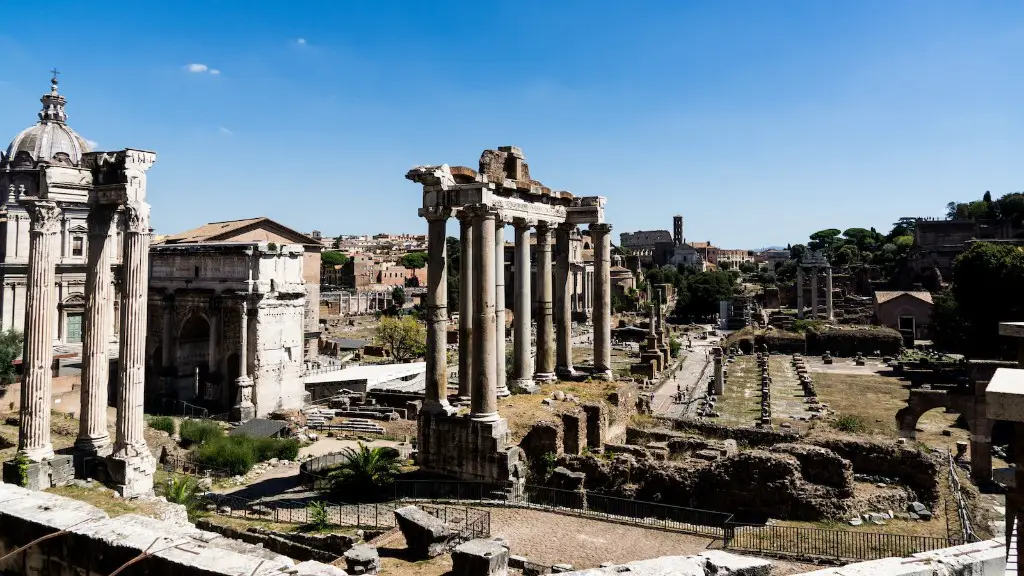Religion in ancient Rome was centred around gods and goddesses and their stories were such an integral part of daily life that the ways of honouring and appeasing them were intertwined with the fabric of the Roman Republic and Empire. With the rise of Christianity in the 4th century AD, the polytheistic system of traditional Roman religion became secondary to the major monotheistic faith. That said, Rome was heavily influenced by religious trends from the Near East, Asia, and the Mediterranean before Christianity, and while all those camps had their distinct areas of influence, this overview will focus mostly on Rome’s key, native religions.
Gods and Goddesses in Ancient Rome
The gods and goddesses of ancient Rome were a pantheon steaming which stemmed from the local animism of the Etruscans and pre-Roman Italic peoples. Their adopted gods and goddesses from Greece, the Near East and other regions added to the roster. In the beginning, each local deity was thought to hold a specific and separate power and responsibility, but over the centuries, the personal attributes and names of gods became more complicated and interconnected. However, the indigenous or Roman gods had a special significance, as it was felt their favour was necessary for the success of the city of Rome as a whole.
The Fratri Cell
The original form of worship of the gods and goddesses of the Roman pantheon took place within small private institutions, called “Fratri”, which served as gathering places for the Roman families. These Fratri, (Latin for brotherhood) were most likely founded during the early period of Roman history and represented a voluntary social contract among members of the same clan. Each Fratri was oriented to one specific deity and each had its own calendar of cult activities that the members of the Fratri respected and followed to honour their patron god.
Festivals and Celebrations
Festivals were very important for the ancient Romans as it showed their appreciation for the gods and goddesses that watched over them. These festivals served a great purpose to gather the people of Rome and celebrate the gods, in hopes that their prayers were answered. The major festivals to the gods and goddesses were the Feriae Latinae (held in May), Compitalia (held in December) and Saturnalia (held in late December). In addition, Rome held an annual celebration in honour of Apollo, called the Festival of All Nations, during which foreign religious embassies took part in the ceremonies.
The Role of Priests in Ancient Rome
The priests, Politi Sorores, in Ancient Rome were in charge of maintaining religious rituals and ceremonies. They held administrative roles in religious life and were the representatives of the gods who kept their temples and kept the gods’ names alive. The priests were in charge of leading, educating, and organising religious activities and events, and ensuring that the gods were receiving their due respect from the citizens of Rome.
Sacrifices as a Religious Practice in Ancient Rome
Sacrifices, of which there were three types, were a religious duty in ancient Rome. The most important was the sacrificium, which was a ceremony that consisted of killing an animal, usually a lamb, and offering it to the gods in exchange for something — most commonly in hopes of gaining their favour. The animal was subjected to a series of rituals, such as being consecrated and sprayed with holy water, and was then slaughtered so its blood could be offered in an altar. In addition to sacrifices, offerings of fruits and vegetables, as well as prayers and hymns, were other methods used by the Romans to honour the gods.
The Altar in Ancient Rome
The altar was a location of great importance for religious practises in Ancient Rome. It was physically the site where a sacrifice occurred, as well as a spiritual place where gods and goddesses were supposed to come down from the heavens in response to the sacrifices made to them. The people of Rome believed that a god or goddess could descend to or ascend from an altar. This altar was usually considered to be the centre of the universe, and the religious ceremonies held around it were thought to be acts of communication between the heavens and the earth.
The Impact of Christianity in Ancient Rome
The decline of traditional Roman religion began in the late 4th century AD with the rise of Christianity, which was officially declared the imperial religion in 380 AD by the Roman Emperor Theodosius. Christianity is based on a single deity, and thus it replaced the highly ritualistic religious behaviour of ancient Rome. As Christianity was further established in the Roman Empire, public rites in the temples of Roman gods were abolished, gods and goddesses were no longer worshipped and temples were eventually closed and converted into churches. Despite being established as the official religion of the state, Christianity faced some difficulty in being accepted as the new faith.
Insights from Modern Scholarship and Popular Religion
Modern historians have suggested that traditional Roman belief and practice had a positive influence on Christianity, specifically in its understanding of the divine-human relationship. The control of the gods and goddesses, as well as its ideas of intercession and sacrifice, as already established in Roman religion, were transitions into the redemptive themes of Christianity. While this could be a point of contention for many early Christian writers, there is no clear conclusion as to how large or small of an impact this was.
Today, elements of traditional Roman religion continue on in popular culture. There is a growing “Neo-paganism” movement, specifically in Western Europe, which focusses heavily on the gods and goddesses of the Roman pantheon, incorporating elements from both the religion and its artwork. While often a subject of controversy, this renewed interest in the religion can be seen as a component of the rise in appreciation for alternative and often neglected worldviews and spiritual traditions.
The Nuances of Religion and Politics in Ancient Rome
In Ancient Rome, the relationship between religion and politics was extremely interconnected. Religion was a central component in daily life, and the Roman Senate relied heavily on it for social and political control. Religion also served a purpose in establishing Rome’s identity, as conquered and absorbed territories brought in new gods and goddesses to the pantheon. The Roman Senate used the gods and goddesses to help legitimise their authority, and so the gods became a tool in establishing the political order.
The Influence of Religion on Ancient Rome’s Art
Religion was present in art forms, both public and private, in Ancient Rome. Religion and art were ways to both explore and perpetuate the core values and foundations of Rome. Even in times of social, political or economic unrest, the gods were seen as a stabilising force that could be relied on for assistance or for providing solace in chaotic times.
Pictures and statues of gods, goddesses and mythical creatures, such as the winged Genius, were placed in public and private places to show the respect and admiration that the Roman people held for the gods. Additionally, frescoes, mosaics and sculptures on architecture depicting religious themes such as funerary and sacrificial rituals were also seen frequently in Ancient Rome.
The Impact of Religion on Ancient Roman Society
Religion was deeply woven into the fabric of Ancient Rome. Religion affected the public and private life of its citizens, with traditions and ceremonies being present in all aspects of life- from daily customs and household behaviour to official laws and state events. Religion seemed to shape the society, moulding it so that those of different classes, age and social standing had something in common and felt connected, whether it was the shared gods, goddesses or the values that were embedded in Roman religion.
Conclusion
While the rise of Christianity changed the religious landscape in the 4th century AD, the traditional religion of Ancient Rome had a profound impact on the evolution of Roman culture and life. Religion was fundamental in a myriad of ways, from art, commerce, politics and society, ensuring that gods and goddesses were present and respected in all aspects of life. Religion had an illustrious presence in Ancient Rome and its fascinating legacy still continues to speak volumes to this day.



